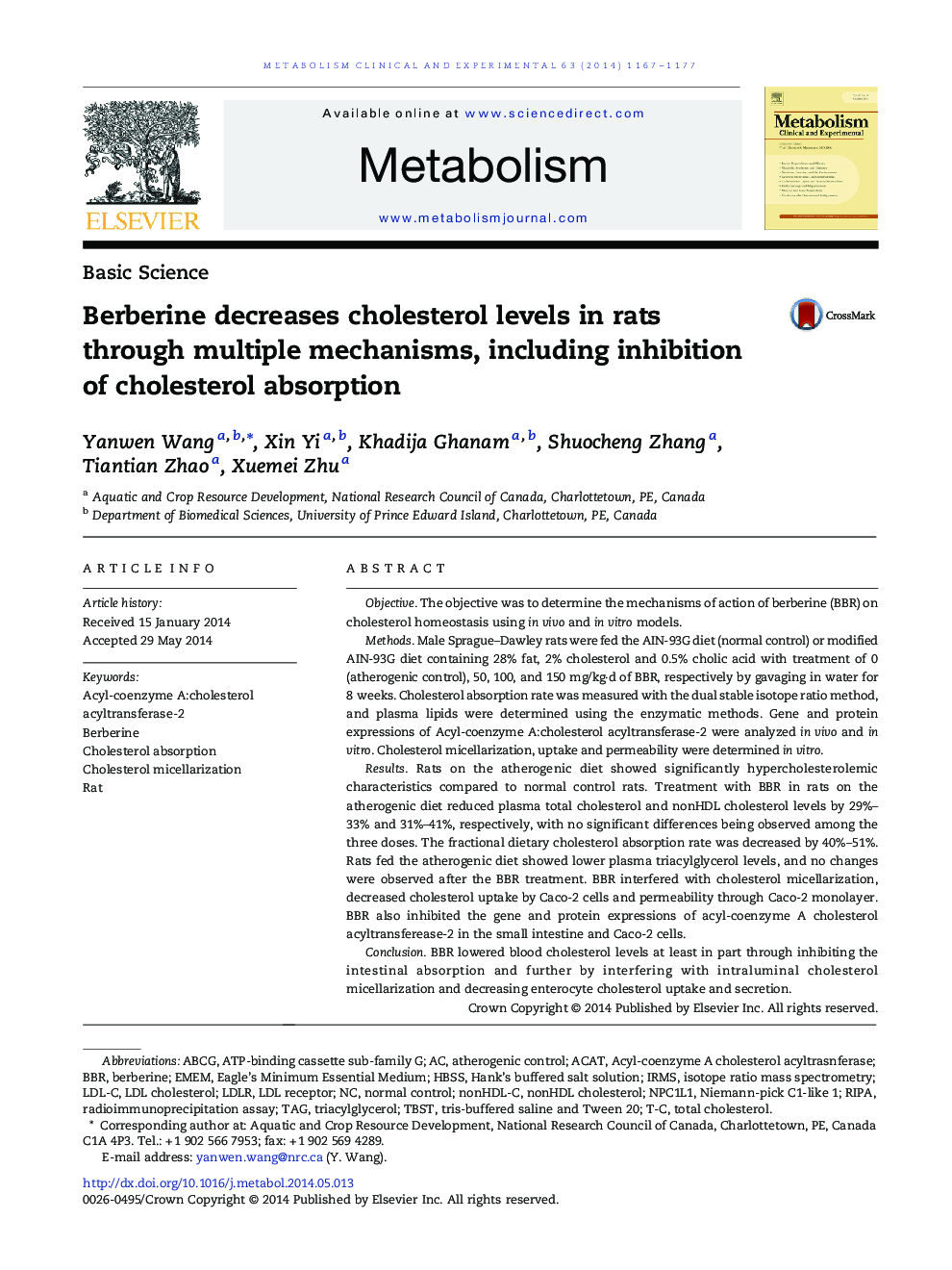| Article ID | Journal | Published Year | Pages | File Type |
|---|---|---|---|---|
| 5903374 | Metabolism | 2014 | 11 Pages |
ObjectiveThe objective was to determine the mechanisms of action of berberine (BBR) on cholesterol homeostasis using in vivo and in vitro models.MethodsMale Sprague-Dawley rats were fed the AIN-93G diet (normal control) or modified AIN-93G diet containing 28% fat, 2% cholesterol and 0.5% cholic acid with treatment of 0 (atherogenic control), 50, 100, and 150 mg/kg·d of BBR, respectively by gavaging in water for 8 weeks. Cholesterol absorption rate was measured with the dual stable isotope ratio method, and plasma lipids were determined using the enzymatic methods. Gene and protein expressions of Acyl-coenzyme A:cholesterol acyltransferase-2 were analyzed in vivo and in vitro. Cholesterol micellarization, uptake and permeability were determined in vitro.ResultsRats on the atherogenic diet showed significantly hypercholesterolemic characteristics compared to normal control rats. Treatment with BBR in rats on the atherogenic diet reduced plasma total cholesterol and nonHDL cholesterol levels by 29%-33% and 31%-41%, respectively, with no significant differences being observed among the three doses. The fractional dietary cholesterol absorption rate was decreased by 40%-51%. Rats fed the atherogenic diet showed lower plasma triacylglycerol levels, and no changes were observed after the BBR treatment. BBR interfered with cholesterol micellarization, decreased cholesterol uptake by Caco-2 cells and permeability through Caco-2 monolayer. BBR also inhibited the gene and protein expressions of acyl-coenzyme A cholesterol acyltransferease-2 in the small intestine and Caco-2 cells.ConclusionBBR lowered blood cholesterol levels at least in part through inhibiting the intestinal absorption and further by interfering with intraluminal cholesterol micellarization and decreasing enterocyte cholesterol uptake and secretion.
